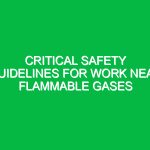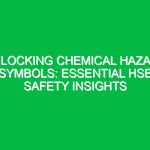Welcome team! Today, we are going to discuss a crucial aspect of Health, Safety, and Environment (HSE) – Being Observant. This Toolbox Talk aims to highlight the significance of being observant in our daily operations to ensure a safe working environment for all. Let’s delve into the importance and best practices of Being Observant.
Understanding Being Observant
Being observant is more than just seeing what’s in front of you. It involves actively paying attention to your surroundings, identifying potential hazards, and taking proactive steps to prevent accidents. In the context of HSE, Being Observant plays a vital role in maintaining a safe workplace and minimizing risks.
Why Being Observant Matters
By being observant, we can identify unsafe behaviors, conditions, or equipment malfunctions before they lead to accidents. This proactive approach not only protects us and our colleagues but also enhances overall productivity by preventing disruptions caused by incidents.
Benefits of Being Observant
Some key benefits of being observant include:
- Early identification of potential hazards
- Prevention of accidents and injuries
- Promotion of a safety-conscious culture
- Improved communication and teamwork
Best Practices for Being Observant
To enhance safety through being observant, consider the following best practices:
- Stay Alert: Be mentally present and focused on your surroundings at all times.
- Report Concerns: If you notice any safety hazards, promptly report them to the appropriate personnel.
- Ask Questions: Clarify any uncertainties or seek guidance when in doubt about a task or situation.
- Take Action: If you observe something unsafe, take immediate action to address the issue or notify the relevant individuals.
Real-Life Scenario:
Imagine you are working on a construction site and notice a loose scaffolding plank. By being observant and reporting this hazard, you prevent a potential fall incident that could have resulted in serious injuries.
Key Safety Considerations
When it comes to Being Observant, consider the following safety considerations:
- Wear appropriate personal protective equipment (PPE) to enhance your safety awareness.
- Regularly inspect tools and equipment for any signs of damage or malfunction.
- Stay informed about emergency procedures and evacuation routes in case of unforeseen events.
Compliance and Regulations
It’s essential to comply with all relevant regulations, standards, and company policies related to Being Observant. By adhering to these guidelines, we not only ensure our safety but also fulfill our legal obligations to maintain a secure work environment.
Conclusion
Being observant is a fundamental aspect of promoting safety in our workplace. By actively paying attention to our surroundings, identifying potential risks, and taking proactive measures, we contribute to a safer and more productive work environment for everyone. Remember, safety is everyone’s responsibility. Thank you for your attention and commitment to maintaining a safe workplace.


